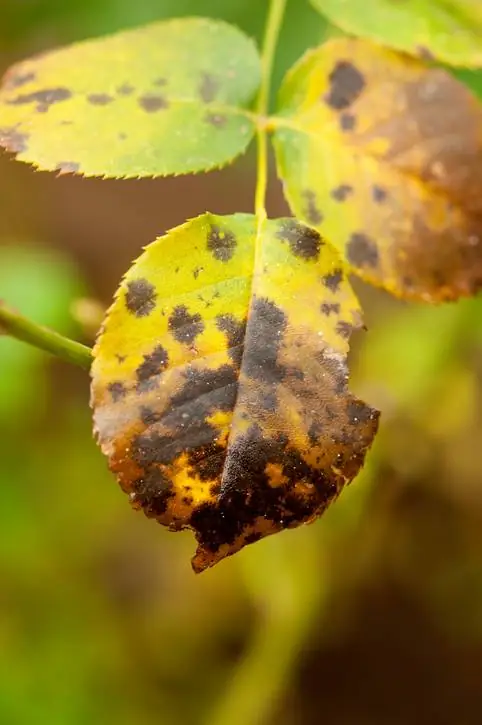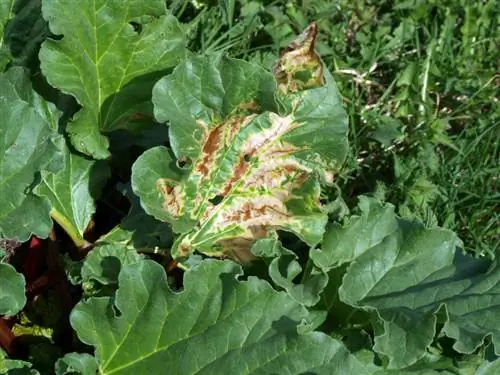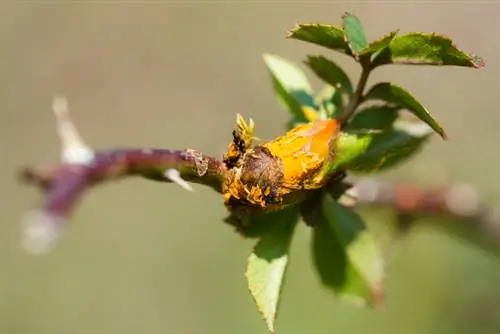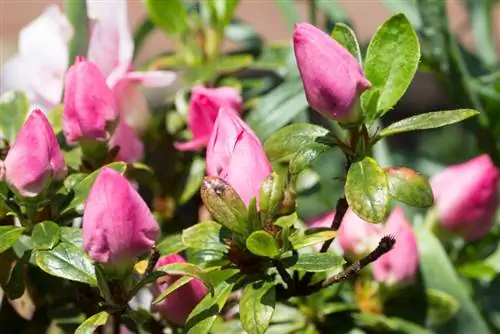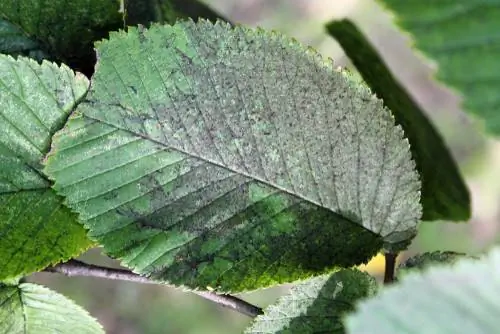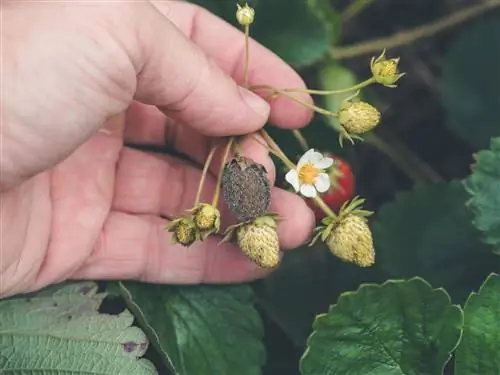- Author admin [email protected].
- Public 2023-12-16 16:46.
- Last modified 2025-06-01 06:02.
Star sooty mold, one of the most feared diseases in roses, is caused by the harmful fungus Diplocarpon rosae. In this article we will tell you how to recognize this rose disease and what you can do about it.

How do I recognize and combat star sooty mold on roses?
Star sooty mold is a disease of roses caused by the fungus Diplocarpon rosae. Recognizable by round, black-brown spots on the leaves. Timely removal of the affected leaves and natural sprays such as field horsetail broth help against star sooty mold.
Diagnosing star sooty mold
The disease mainly occurs after damp and cool summers and is quite easy to diagnose: initially isolated, later increasing numbers of round, black-brown leaf spots appear on the rose petals. These have - as the name of the disease suggests - a radiating edge. The leaves usually turn yellowish around the large, quite irregular spots. The affected leaves initially yellow and eventually fall off completely. In the event of a severe infestation, the rose can lose almost all of its foliage and become immensely weakened. For this reason, the fungus should be treated as quickly as possible, because in the worst case, failure to treat it can even lead to the death of the rose.
How can you effectively combat star sooty mold?
When it comes to combating it, you don't have to hope for winter, because the fungal spores overwinter in the rose leaves and ensure a renewed infection next year. Therefore, infected leaves should be removed immediately and disposed of with household waste, including those that are on the ground. Rake up fallen leaves thoroughly and under no circumstances throw them into the compost - this would only create a new source of infection. Many guides recommend fungicides, i.e. chemical fungicidal agents, to combat it. However, these are usually not necessary at all - at least if you noticed the infestation early on - and also have a negative impact on the natural balance in the garden. Natural, home-made sprays based on field horsetail, comfrey or garlic have proven very effective against sooty mold.
Sensible prevention of sooty mold
These products - especially field horsetail broth - can also be sprayed preventatively to stop an infestation before the leaves emerge. This measure should be carried out in spring, when the leaves are just beginning to unfold. Spray the roses several days in a row, but it should be dry and reasonably mild. You can also prevent star sooty mold through good ventilation of the rose - thanks to an optimal location, the correct planting distance and regular pruning - as well as balanced fertilization.
Tip
Plant garlic and other onion plants (e.g. ornamental garlic) around the rose, as these have a deterrent effect on pests and also disinfect their surroundings.

